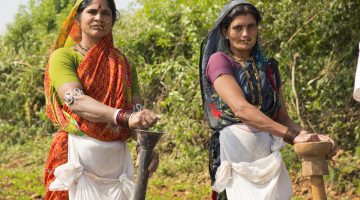After a challenging 2012-13, Agriculture Sector registered a growth of 4.7% in 2013-14 when compared to 1.4% growth in 2012-13. Agricultural exports also registered an increase of 5.1% in 2013-14 contributing to 12% of the total exports of the country. The food grains production was at 265 million tonnes but will fall short of the target set under National Food Security Mission and an additional 25 million tones food grains production is needed by 2016-17.
Given the challenges of food security, CropLife India strongly advocated introduction of newer technologies to improve productivity as well as protect the crop from pests and diseases. In India, according to Yes Bank-ASSOCHAM study, crop lossess due to pests and diseases were estimated atRs 50,000 Crores. This is in line with earlier estimates done by CropLife which had pegged the losses to Rs.60,000 crores. Post-harvet losses amount to another Rs.30,000 crores.
Hence, introduction and propagation of new technologies for Crop Protection in agriculture is of paramount importance to the nation. At the same time protecting farmers interest by providing the essential stewardship practices and helping them buy genuine products was also the focus of CropLife India to ensure safe and secure food supply that has been produced in a sustainable manner.
Indian regulation of crop protection products has helped bring in new technologies to Indian agriculture. However, there have been regulatory challenges such as delays in registration of newer molecules, facilitation of innovation in existing chemistries through minor changes to formulants, expedited harmonization with global best practices to facilitate innovation and faster registration of molecules at lower cost.
CropLife India continued to work on the regulatory issues more intensively by organizing policy workshops on important topics such as Principles of Minor Changes Regulation and Global Mathematical Models on risk assessment of Operator Exposure models. I congratulate the Regulatory affairs team for their efforts, and the support given by CropLife Asia. The excellent work done by CropLife Regulatory team has also been recognized by CropLife Asia, which conferred with CropLife Asia’s 2013 Regulatory Excellence Award in recognition of dedicated teamwork in pursuit of improving the regulatory landscape for pesticides registration in India.
In our pursuit towards sustainable agriculture, we continued to reach out to more and more farmers on stewardship practices to ensure that the farmers use the right Crop Protection Products at the right time and in a safe manner.
Our projects in Adoni on Responsible Use & Safe Storage, and in Ananthavarapadu on Container Management revealed that through demonstration and farmers’ training, sustainable agriculture could be advocated while enduring to improve productivity. Further, on improving productivity, CropLife India expanded its efforts to reach out to more farmers in the Hoogly and Burdman District of West Bengal to propagate Hybrid Rice cultivation with prescribed package of practices.
Finally, I would like to mention that the menace of illegal and spurious pesticides continued to plague farmers and industry. CropLife India stepped up its efforts to fight this menace through farmers & dealers training and strong policy advocacy.
I thank the member companies for investing their time and resources to work towards the objectives of CropLife India. I congratulate all members of CropLife India Anti Counterfeiting Group, Legal Affairs Group, Marketing Group, Regulatory Affairs Group and the Stewardship Group for their contributions.








